What is unfolding before our very eyes is a sharp “clash of perceptions.” If we do not exercise due caution we stand to forfeit not only our confidence (in ourselves and in our fellow citizens) but also our freedomsThese last few weeks, we have seen heated debate over the banning of the overly prominent minarets in Switzerland; there have been complaints against ‘offensive’ religious garb in Holland and England, and in the past, there have been curious decisions involving the removal of Christmas trees in the United States and Canada.
Is something catching? At every turn, we are confronted with impassioned and irrational reactions that either feed into a sense of victimhood among those who see islamophobia wherever they turn, or that magnify the feeling that a country’s cultural homogeneity is at risk, that is being colonized by a foreign religion.
So acute has this sensitivity become that legal or artistic authorities anticipate negative reactions, and take preventive measures. One has only to look at Germany, where an opera by Mozart was postponed because a single telephone caller suggested it would be unacceptable to Muslims. In Canada, Christmas trees are dismantled because they might offend non-Christians.
Discomfort levels in our societies are rising, or so it would seem.
In theory, we invoke diversity and tolerance. But in real life, we raise our hackles and withdraw into ourselves. Today, who can confirm with any certainty what he or she has the right to say, to show? Is the expression of difference commensurate with the rights of citizenship? The situation is serious; the dangers we face should not be minimized.
It is urgent to remind ourselves that what allows us to live together in mutual respect is the legal framework – the common legislation – that makes all citizens equal before the law. Within this framework, which forms the basis for the rule of law, and which all citizens and permanent residents must recognize, fundamental freedoms must be respected. These include the freedom of conscience, of religion, of expression, of movement, and more. In recent years we have witnessed a slow, steady erosion of these basic rights, which are being called into question in a particularly insidious manner.
Over the last eight years the overarching context of political debate has been that of terrorist threat, which implicitly raises the issue of security. In the name of security, and in a climate of fear, a majority of citizens has accepted that their civil rights be reconsidered, if not overtly challenged.
It is in this oppressive atmosphere that the issue of Islam has arisen: from fear of terrorism it has been but a short step to fear of Muslims, of their visibility, of their differences, and of the threat to national identity they are thought to represent. To terrorism, and to this heightened visibility, should also be added the reality of immigration which is not about to decrease, either in Canada or in Europe. The number of Muslim men and women living among us will continue to grow.
The debate over multiculturalism and identity has become saturated with these questions, these fears, these raised hackles. The problem is not one of legislation-few would disagree with its stated aims and principles-but our own fears and perceptions, which divide us, set us against one another, and incite some even to attempt to change the law.
What is unfolding before our very eyes is a sharp “clash of perceptions.” If we do not exercise due caution we stand to forfeit not only our confidence (in ourselves and in our fellow citizens) but also our freedoms (which would first affect Muslims, then impact later upon all citizens).
We have so far demonstrated no capacity for managing these fears, these doubts and these negative perceptions. Some believe that the only solution is to obliterate all religious-or cultural-symbols that indicate difference. The neutrality of public space would be equivalent to the disappearance of all distinctive signs. This would, its advocates argue, ensure equality and avoid giving offense. The display of diversity, others contend, can only minimize possible fears. The proposition is a seductive one. But the process of globalization reminds us every day that it is not enough to observe differences for us to be able to understand them in a positive way.
Both positions are as extreme as they are unrealistic. We are unlikely to overcome the fear of diversity and of difference by hiding them or over-exposing them.
In our view, the debate can take place in a climate of serenity on three conditions. First, we must respect the law of the land and apply it in equitable fashion for all citizens, and with respect to every religious and cultural community.
Second, rather than calling for the removal of all distinctive signs from public space, these signs should be, as a matter of urgency, made an integral part of the educational curriculum. Our pluralist society must provide its citizens with the tools to understand religions, their symbols and their practices.
To overcome fears, we must offer proper instruction to our young people; we must cultivate their understanding and their critical spirit. The same prescription should apply equally to all. This means acquiring a better understanding of the other’s philosophical and cultural orientations; seeing the other’s world as a source of richness, and not as a threat.
The third condition concerns both common sense and civility. We must become accustomed to debating social issues in a thoroughgoing and critical way, without trading on our principles, but not confusing criticism with mindless, hurtful and sometimes ill-intended and cowardly provocation.
In the guise of defending freedom of thought, some intellectuals, journalists and politicians are actually legitimizing the racialist hate-speech that is undermining our democracies, thus generating exactly the opposite of what they claim to defend.
Religious symbols should be visible in public space, in a dignified and non-provocative manner. Christmas trees here, Jewish menorahs there, and further along, a minaret…
These symbols represent human life in all its diversity. It is essential to learn to respect the sensitivities of others, all the while encouraging both discretion and good taste. To aspire to such a responsible, reasonable expression of diversity in our societies, we must explain, educate, learn to know one another and to know and respect our neighbors.
If we do not make these efforts, we shall fall together. To fear a Christmas tree and to fear that it could frighten somebody boils down to the same thing. In both cases, it reveals a lack of confidence in ourselves, and in others. Our democratic societies are in danger. In allowing ourselves to be infiltrated by fear, to be blinded by the passion of identity, we are entertaining the most serious illusions about our freedom.
But in the final analysis, it is up to us to decide how we will exercise our freedom.
Artwork entitled, Just Symbols by Sharon Benton. She explains her work:
“The title “Just Symbols” can be read as the religious icons are merely symbols or that they are righteous symbols. I chose symbols to represent many different cultures and religions, and for their graphic quality. They were arranged according to graphic appeal and block color, with no regard to the meaning of a particular symbol, or what could be construed by placement of one symbol beside another. I used colorful blocks made from fabric scraps against a black background to resemble a stained glass window. This quilt also speaks to the beauty and unity that we could achieve by practicing religious tolerance.”
SOURCE : Muslim Presence

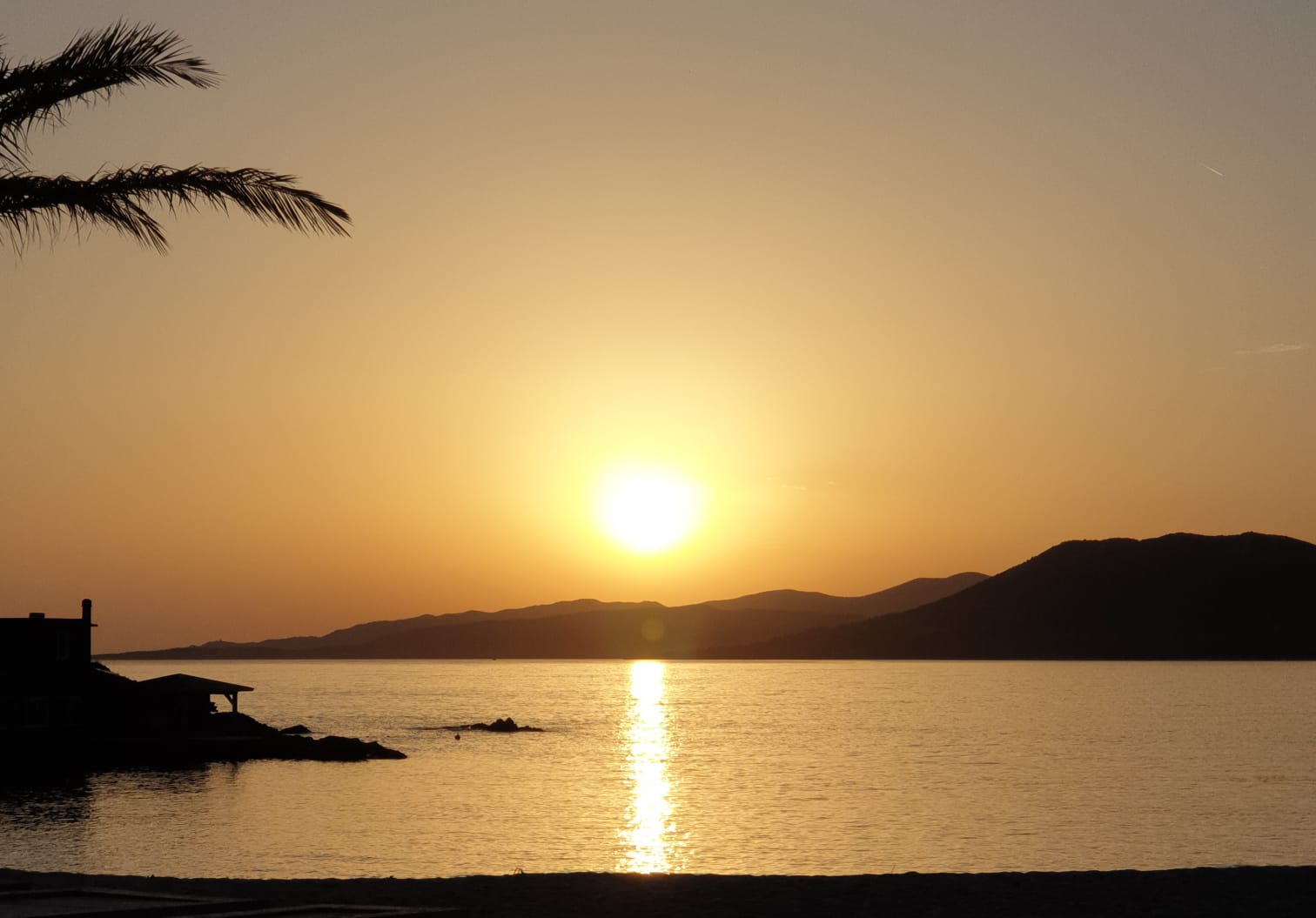

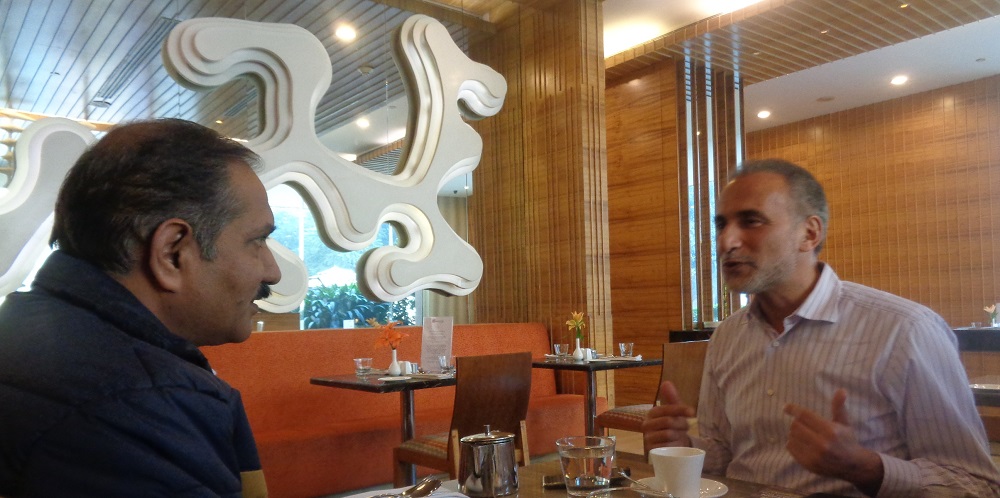
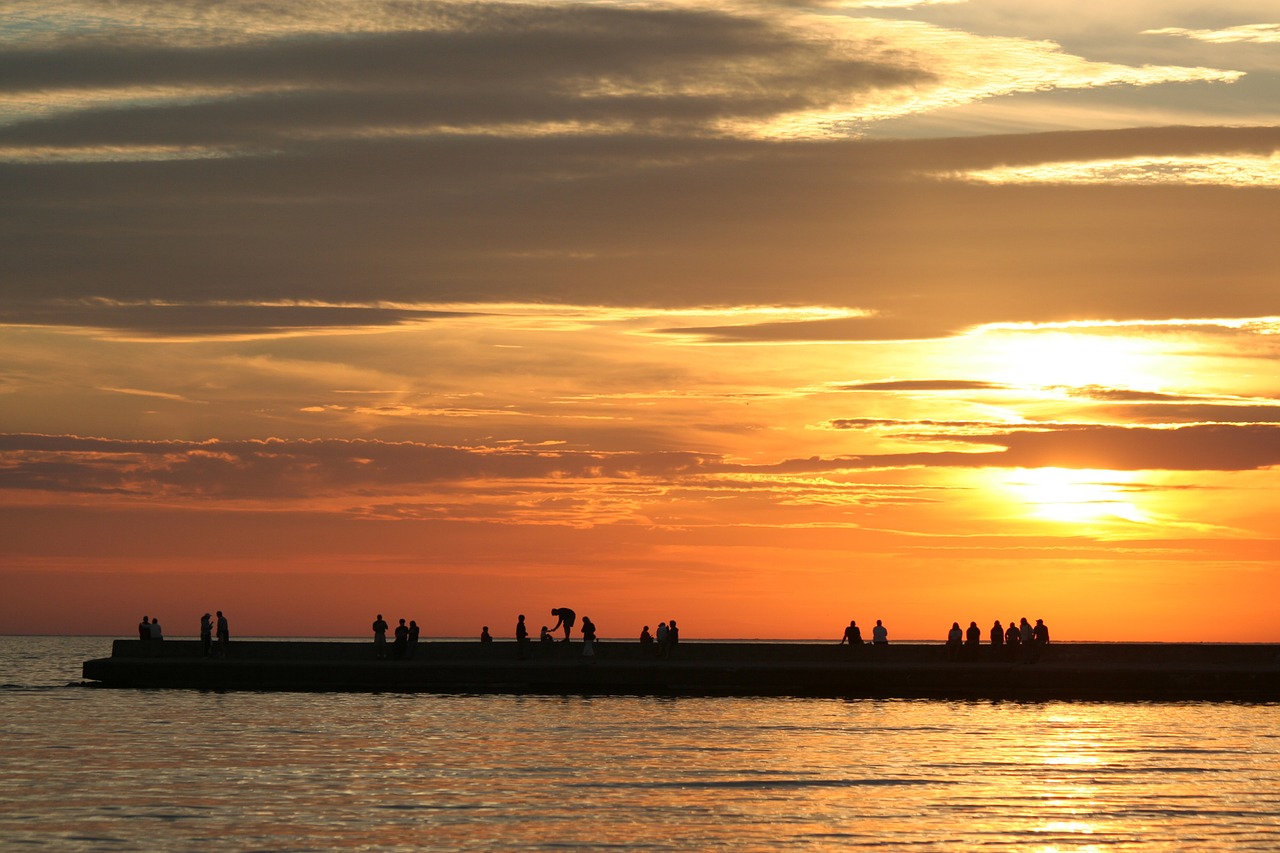
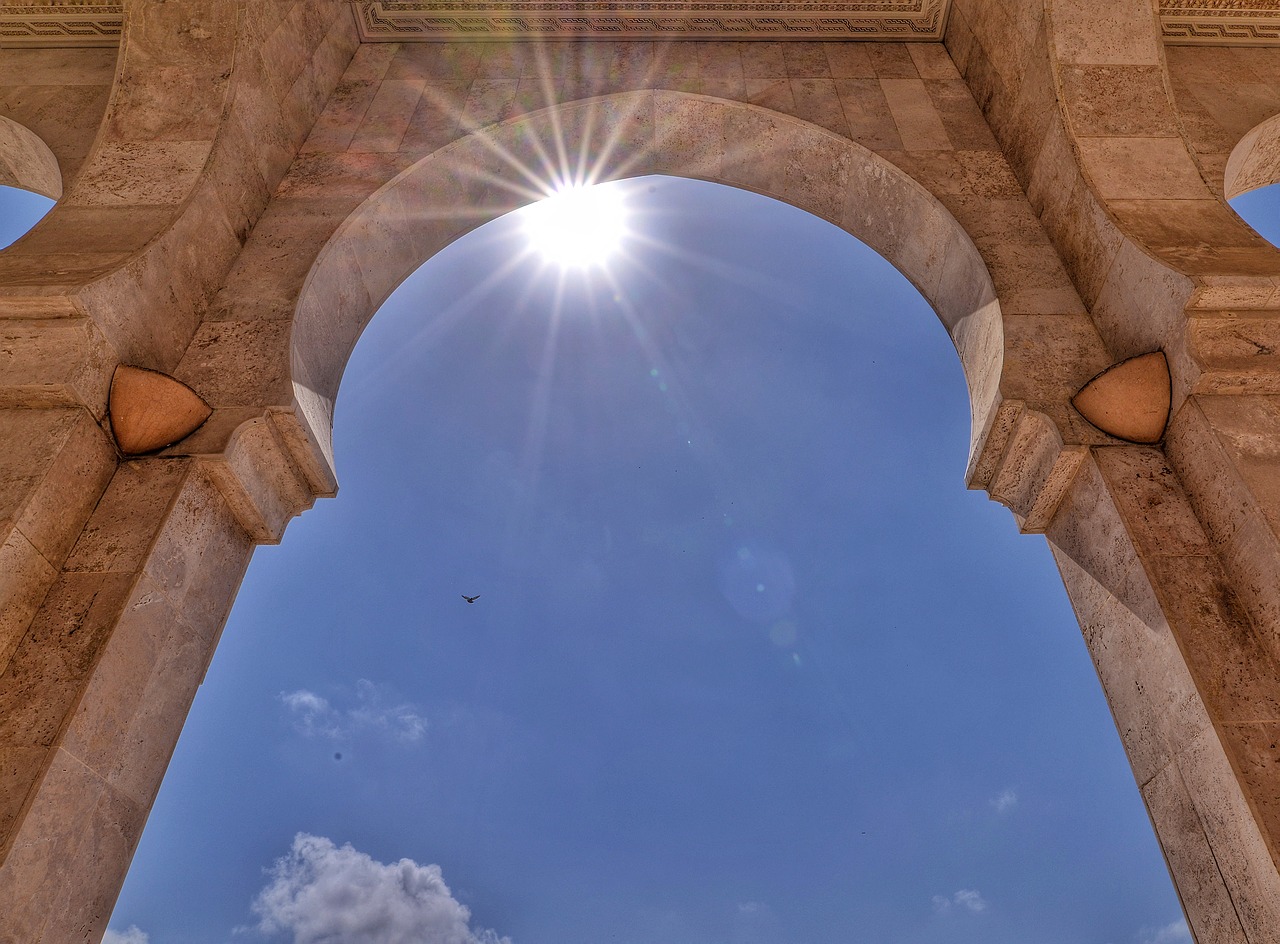
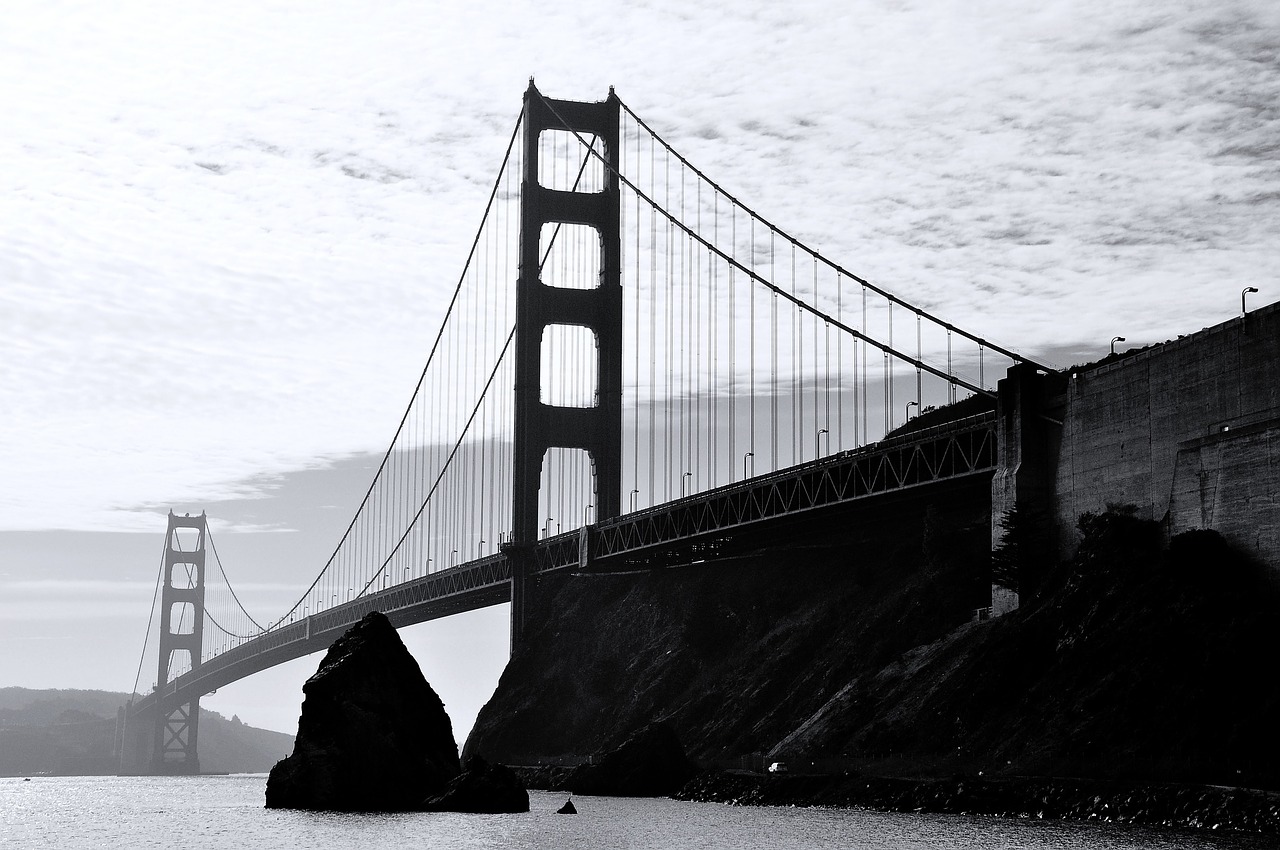


Why should my wearing a headscarf be offensive? I think THAT is kind of offensive!
Ofcourse it is not offensive to wear a headscarf, the problem is that a lot of people are sincerely afraid, exactly as Tariq Ramadan describes. My question to you is: do you feel offended or scared if people wear a cross?
I don’t think anybody (in their right mind that is) would feel afraid or offended of anybody wearing a cross…. So I would repeat the question posed above: what’s so offensive (or scary) about a headscarf?
Hi Agnes,
What do you know about Islam apart from what you have read in the media or seen in the Hollywood movies? If I don’t know a subject I wouldn’t dare discuss it with you. Please don’t get offended by my email and I hope you manage to read more about Islam. I am just asking you to understand the main values of it so you can see the difference between the reality and the propaganda by the media and some politicians. One of the most misunderstood points is that if a Muslim doesn’t respect other religions and other people he is not really Muslim. If a Muslim doesn’t believe in Judaism and Christianity he is not a Muslim. If you knew this you wouldn’t ask your question.
Very well reasoned. In the United States, freedom of religion was first adopted simply because there were so many different sects, mostly Protestant, who in the 1700s took their differences very seriously, and couldn’t even agree on how to pray together. Both the Congregational and the Anglican church (renamed Episcopalian) had hopes of becoming the official Church of the United States, but instead, regulation of religion was set outside the scope of government. Still, Samuel Adams spoke up for opening sessions of congress with a prayer, saying “I am no bigot, and I can listen to a prayer offered by a man of piety and virtue, who is also a friend to his country.” The key point is, nobody is leading all present in prayer, a prayer is being offered for the work of the legislative body.
There are those who have convinced themselves that the U.S. constitution guarantees them “freedom from religion.” It does not. It sets a side a special place of preference for religion, a guaranteed place in the public square, but without government endorsement. The First Amendment doesn’t say that all religions are equally true, it says the government is incompetent to rule on which, if any, are the True Faith.
Europe went directly from an established state church (some variety of Christian) to completely secular republics or constitutional monarchies. They have missed an essential component. If there is no established church, many feel that there must be an established non-church. That is not religious freedom. The American principle, inclusive of Muslims, Hindus, Buddhists, surviving Native American practices, Santeria, has a lot to offer the world still.
I understand why a law might require that a person’s face be visible in public. That is what American jurisprudence calls a viewpoint neutral, generally applicable law with a non-religious rational basis. But other than that, there is no reason governments should repress display of religious symbols, or regulate what people wear. Mennonite and Amish women also cover their heads.
A question for Professor Tariq: What good is religious identity without its expression?
Thank you